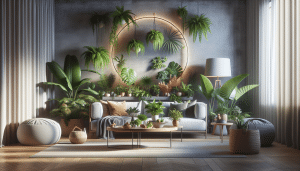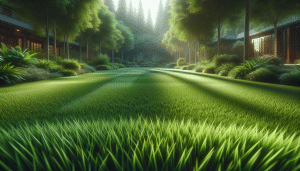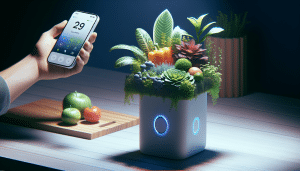Secrets You Can Use for a Healthier Indoor Garden
Henry King October 19, 2025
Ready for a flourishing home garden? This article reveals practical indoor gardening secrets you can use for year-round healthy plants. Master lighting, soil, watering, pest management, and space-saving tips in one guide designed for plant lovers seeking real results.
Understanding Your Indoor Environment
An indoor garden thrives only when it is matched with the right care and thoughtful attention to its environment. Light availability, room temperature, and humidity can significantly impact your plants, especially if you’re using your living spaces for greenery. Many people find that houseplants like pothos, snake plants, or peace lilies adapt well to a variety of home conditions, but each variety has unique preferences. Paying attention to how light shifts throughout the day, or how a room’s temperature changes with the seasons, can be essential for success. Indoor gardening experts often recommend evaluating each spot in your home for brightness or drafts before selecting the perfect plant companion.
Temperature inconsistencies can be challenging to manage, especially in homes with fluctuating heating and cooling routines. Some houseplants prefer steady warmth, while others thrive with nighttime cool-downs. For those living in apartments or houses with less natural light, artificial plant lighting may also offer a solution. LED grow lights have become a popular tool as they mimic sunlight and can supplement shorter winter days, helping ensure strong plant growth. Matching a plant’s natural habitat to your home’s microclimate supports resilience against stress and disease, setting a foundation for long-term indoor gardening success.
Humidity plays a pivotal role, especially for species adapted to tropical environments. Many common houseplants benefit from the extra moisture provided by pebble trays or humidifiers. Airflow is equally important—plants placed too closely together or in stagnant areas may invite fungal problems. A small oscillating fan on a gentle setting can help keep the air fresh. When these core elements of environment—light, temperature, humidity, and air movement—are addressed together, even less-experienced gardeners can achieve remarkable results and transform living spaces into lush home gardens.
The Essentials of Soil and Potting for Indoor Plants
Good soil is more than just dirt; it’s the backbone of healthy indoor plants. Rich, well-draining mixes ensure that roots can breathe and access the nutrients needed for strong growth. Commercial potting soils designed for houseplants typically contain a mix of organic matter, peat moss, and perlite or vermiculite to allow moisture retention while permitting excess water to escape. For specialty plants like succulents or orchids, custom blends are available to accommodate unique drainage needs. As a first step, examine the specific care tags on each plant and match their requirements with the type of potting medium—this link between plant and soil supports resilience from the start.
The role of repotting is often underestimated. As indoor plants grow, their root systems can become tangled or compacted, restricting nutrient uptake and water absorption. Regularly inspecting root systems and upgrading to slightly larger containers every one to two years refreshes the soil, reducing salt buildup from fertilizers over time. Some gardeners even mix their potting medium at home, tailoring the ratios of sand, compost, or bark chips to suit individual plants. This custom approach can produce impressive, long-lasting results for determined indoor gardeners who want to get the most from every leaf and blossom.
Pots matter too: drainage holes at the base are crucial for nearly all houseplants to prevent waterlogged roots and protect against root rot. Decorative planters without holes can be used as outer containers (“cachepots”), allowing the plant to remain in its plastic nursery pot for easier watering routines. For those focused on sustainability, biodegradable pots and organic soil amendments help reduce the environmental impact without sacrificing plant health. Carefully chosen soil and containers offer a reliable foundation, building resiliency into your entire indoor garden arrangement.
Navigating Light Sources for Vibrant Growth
Light is the lifeblood of any indoor garden, driving the process of photosynthesis and powering every new shoot and leaf. But not every plant requires full sun. Shade-loving varieties excel in low-light corners, while others flourish on sunny windowsills. Assessing your home’s natural light pattern is the first step to grouping plants according to their needs. For example, leafy foliage plants like ferns and calatheas handle indirect light well, whereas cacti and succulents prefer direct, unfiltered sunshine for several hours a day. Small changes, like rotating pots every week, keep growth balanced and prevent stems from stretching unevenly toward their brightest source.
Artificial illumination is a game changer for plant lovers in darker houses or places with shorter daylight hours. Energy-efficient LED grow lights now make year-round indoor gardening practical. These lamps vary from basic bulbs screwed into desk lamps to elaborate full-spectrum setups that mimic natural sunlight. The key is to match the type and duration of light to the species you’re growing—some require only a few hours of supplementary brightness, while others flourish with 12–14 hours of artificial light daily. Position lights close enough to the plants to be effective, but not so near as to risk burning delicate leaves.
Those who experiment with light often discover fascinating changes in plant behavior. Variegated plants reveal brighter patterns with more sunlight, and some flowering species may bloom indoors with the right supplemental lighting. Keep in mind that overexposure can cause browning or leaf scorch, while plants with insufficient light may become leggy or pale. Adjusting light levels based on seasonal changes is another advanced tip for experienced indoor gardeners interested in maximizing their home’s natural advantages throughout the year.
Watering Strategies for Avoiding Common Pitfalls
Watering is often the most misunderstood element of plant care. It’s easy to believe that more water means happier, healthier plants, but overwatering can quickly lead to root rot, one of the leading causes of houseplant decline. Indoor soils tend to dry more slowly than outdoor beds, so it’s important to check moisture levels before reaching for the watering can. Moisture meters can be a valuable tool, but even simple finger tests work well. Insert a finger about an inch into the pot: if the soil feels dry, it’s usually safe to water. Every plant, from tropical Monstera to delicate African violets, has its own rhythm, so careful observation is essential.
Seasonal shifts in temperature and daylight also affect how often and how much to water. During winter, heating systems drop humidity and slow plant growth, reducing their need for water. In contrast, rapid spring and summer growth demand more frequent hydration. It’s wise to use room-temperature water, avoiding chilled or hot water to limit plant stress. Allowing tap water to stand overnight helps dissipate chlorine and other chemicals, making it gentler on roots. Where possible, collected rainwater provides a soft, natural alternative rich in trace minerals.
Some houseplant enthusiasts develop a regular schedule, but flexibility is key. Factors like pot size, type of soil, and even the container’s material (clay dries out faster than plastic) should all shape your watering approach. Observing leaves for wilting, yellowing, or curling leads to fast problem-solving, as these symptoms often point to watering mistakes. A thoughtful, attentive approach to watering reduces risk and serves as the foundation for truly thriving houseplants in any home setting.
Managing Pests and Plant Health Organically
Pests and diseases inevitably find their way into even the most meticulously maintained indoor gardens. Common culprits include spider mites, aphids, and fungus gnats, but an organic approach to plant health can keep these annoyances in check without harsh chemicals. Regularly inspecting stems and the undersides of leaves with a magnifying glass ensures early detection—one of the best defenses. Quarantine new plants for a week or two before adding them to established arrangements, limiting the introduction of hitchhiking insects that may go unnoticed at first glance.
When infestations strike, natural remedies offer gentler, environmentally friendly solutions. Insecticidal soaps and neem oil sprays are popular for treating many indoor outbreaks; both disrupt soft-bodied pests while being safe for most houseplants and humans alike. Sticky traps can help catch flying adults like fungus gnats, while wiping leaves with a damp cloth removes dust and early pests. For severe cases, pruning affected parts of a plant may save its neighbors. Resilience develops as a result of these simple, organic methods, creating a balanced ecosystem right in your living room.
Strong, healthy plants are far less attractive to pests, so proactive care pays off in the long term. Proper nutrition, regular pruning, and appropriate spacing help reduce the risk of diseases like powdery mildew or bacterial leaf spot. Some gardeners also introduce beneficial predators such as ladybugs or predatory mites for natural pest control. Monitoring regularly and responding quickly keeps indoor plant populations robust, lush, and less prone to repeating issues in the future.
Creative Solutions for Small Spaces
Urban dwellers and those short on square footage can still enjoy impressive indoor gardens through careful planning and creativity. Vertical gardening systems, such as wall-mounted planters or hanging baskets, optimize available space while providing intriguing focal points. Window ledges, bookshelves, and stairwells are often overlooked but perfect for mini container gardens or trailing vines. Layering plants of different heights creates visual interest and maximizes every inch, giving even tiny apartments lush, vibrant appeal.
Multipurpose furniture can do double duty—benches or tables with built-in planters add greenery without taking precious floor area. Stackable pots and tiered plant stands offer home gardeners flexibility for rearranging based on sunlight or seasonal changes. Some enthusiasts create hydroponic or aquaponic systems for edible herbs and greens, producing fresh ingredients all year long right from the kitchen counter. Matching plant size to its final destination is key for the aesthetic and practical success of small-space indoor gardening.
Low-maintenance plants such as ZZ plants, snake plants, and air plants are ideal for beginners or those with busy lifestyles. These varieties adapt well to container life and tolerate lower light, making them resilient picks for small-scale spaces. Consistently rotating plant displays or swapping species seasonally keeps your indoor garden feeling dynamic and fresh. Every home, no matter the size, can host inviting pockets of life with a little ingenuity and the right plant choices.
References
1. The Old Farmer’s Almanac. (n.d.). Indoor Plant Care: Secrets to a Thriving Indoor Garden. Retrieved from https://www.almanac.com/gardening/indoor-gardening-tips
2. North Carolina State University Extension. (n.d.). Principles of Indoor Planting. Retrieved from https://content.ces.ncsu.edu/growing-indoor-plants-with-success
3. The University of Georgia Cooperative Extension. (n.d.). Gardening Indoors. Retrieved from https://extension.uga.edu/publications/detail.html?number=B1318
4. PennState Extension. (n.d.). Tips for Successful Indoor Gardening. Retrieved from https://extension.psu.edu/indoor-gardening
5. University of Minnesota Extension. (n.d.). Fertilizing Houseplants. Retrieved from https://extension.umn.edu/houseplants/fertilizing-houseplants
6. University of Illinois Extension. (n.d.). Care of Indoor Plants. Retrieved from https://web.extension.illinois.edu/houseplants/care.cfm







